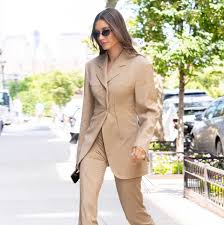Fashion and Technology Fusion: Innovation and Development
Fashion and Technology Fusion: Innovation and Development
Blog Article

The intersection of fashion and technology is a dynamic realm where creativity meets innovation. As the fashion industry evolves, it increasingly embraces technology to enhance its processes, products, and customer experiences. This article delves into how technology is reshaping the fashion landscape, driving innovation, and fostering development within the industry.
The Integration of Technology in Fashion Design and Manufacturing:
Technology has become an integral part of the fashion design and manufacturing process. Tools like Computer-Aided Design (CAD) have streamlined the creation of patterns and prototypes, reducing the time and cost associated with traditional methods. The advent of 3D printing has revolutionized fashion by allowing designers to create intricate and unique garments and accessories that were previously unattainable. This technology enables rapid prototyping and customization, catering to the growing demand for individualized products.
Virtual and Augmented Reality in Fashion:
Virtual Reality (VR) and Augmented Reality (AR) are transforming the way fashion is presented and experienced. Designers can use VR to create immersive fashion shows, allowing audiences to virtually attend events from anywhere in the world. AR applications enable customers to virtually 'try on' clothes and accessories using their smartphones or tablets, enhancing the shopping experience and reducing the need for physical samples. These technologies are also being used in the design process, allowing designers to visualize their creations in a three-dimensional space.
The Role of Social Media and Digital Marketing:
Social media platforms have become essential tools for fashion brands to reach and engage with their target audiences. Brands leverage these platforms for brand promotion, showcasing their collections, and interacting with customers. Influencer marketing more info has become a consumer behaviour powerful strategy, with fashion influencers commanding large followings and shaping consumer trends. Social media also provides valuable data on consumer preferences and behaviors, allowing brands to tailor their offerings and marketing strategies accordingly.
E-commerce and Personalized Shopping Experiences:
The rise of e-commerce has revolutionized the way fashion is sold. Online shopping platforms offer convenience and accessibility, catering to the needs of a global consumer base. Personalization is a key aspect of this digital transformation, with algorithms suggesting products based on individual preferences and purchase history. Chatbots and AI-powered tools enhance customer service by providing instant assistance and recommendations, wearable creating a more seamless shopping experience.
Sustainability and Technology:
Technology is also playing a crucial role in making the fashion industry more sustainable. From the use of eco-friendly materials and production processes to the development of circular economy models, technology is enabling more responsible practices. For instance, digital pattern-making reduces fabric waste, while AI is used to optimize production schedules and minimize overproduction.
The fusion of fashion and technology is a testament to the industry's ability to adapt and innovate. From the design and manufacturing process to marketing and customer engagement, technology is driving significant advancements. As we look to the future, the potential for further integration and innovation is vast. The challenge for the fashion industry is to harness technology in a way that not only enhances its offerings but also contributes to a more sustainable and ethical approach to fashion. By embracing technology, the fashion industry can continue to evolve, offering consumers unique experiences and products that reflect the convergence of art, creativity, and innovation.